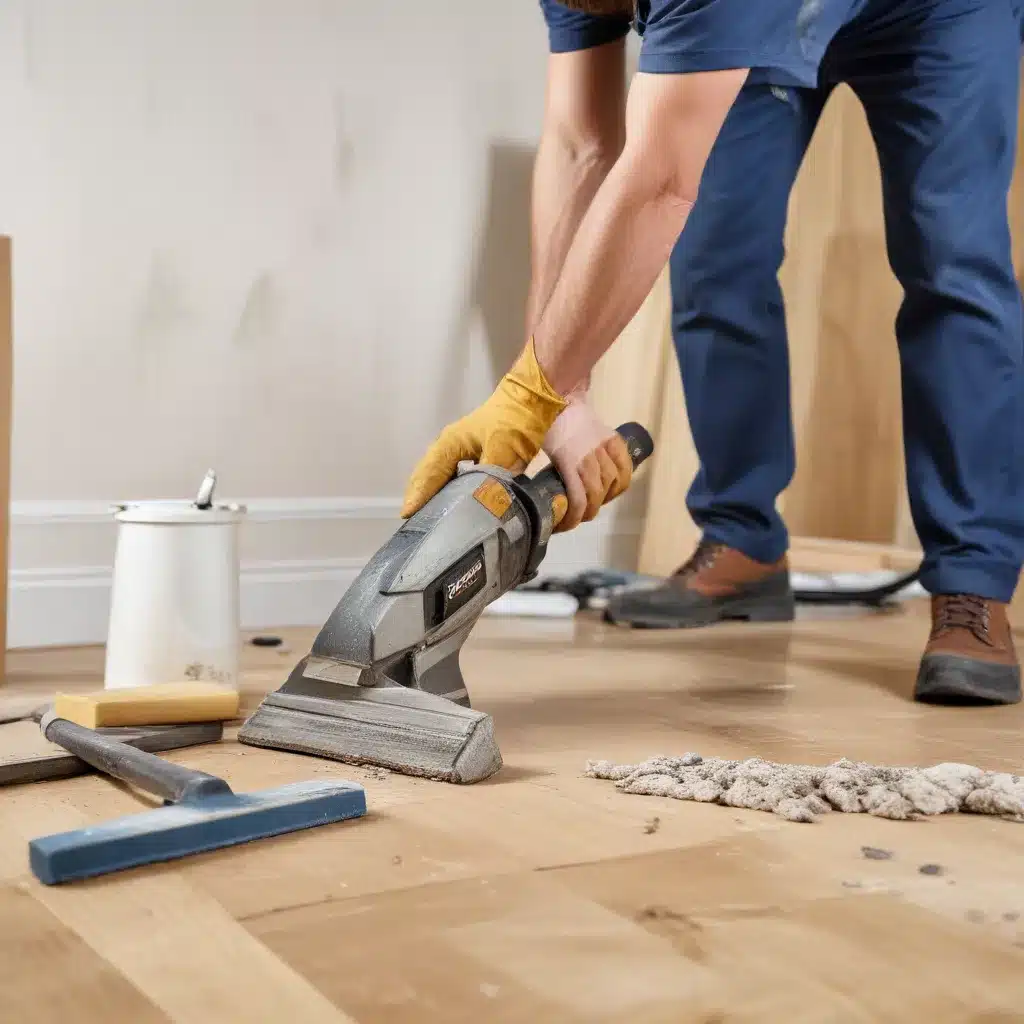Essential Renovation Cleanup Tools for a Tidy Worksite
As an experienced home improvement consultant, I know that the renovation process can be a whirlwind of activity – from demolition to installation, there’s seemingly always a mess to clean up. However, maintaining a tidy worksite is crucial for both the efficiency of your project and the safety of your family. In this comprehensive guide, I’ll cover the essential renovation cleanup tools and techniques to keep your home renovation running smoothly from start to finish.
Cleaning Supplies
The foundation of any effective renovation cleanup is having the right cleaning tools on hand. Let’s start with the basics:
Brooms and Dustpans: A high-quality push broom and sturdy dustpan are essential for quickly sweeping up piles of debris, sawdust, and other construction waste. Look for models with long handles to cover large areas.
Vacuums and Filters: A powerful shop vacuum with HEPA filtration is a game-changer for renovation cleanup. These specialized vacuums can quickly suck up fine particulates like drywall dust that regular vacuums might miss. Be sure to invest in extra filters to maintain optimal suction power.
Mops and Buckets: Once the bulk of the debris is cleared, you’ll need to tackle hard floor surfaces. Look for commercial-grade mops and buckets with wringers to efficiently clean and dry floors. Color-coding your mops (e.g., one for bathrooms, one for kitchens) can help maintain hygiene.
Personal Protective Equipment
Protecting yourself during the cleanup process is just as important as having the right tools. Equip yourself with:
Gloves: Sturdy work gloves will safeguard your hands from sharp objects, abrasive surfaces, and harsh cleaning chemicals. Opt for cut-resistant gloves when handling materials like broken glass.
Masks: A high-quality N95 or P100 particulate respirator mask will shield you from construction dust, fine particles, and potentially harmful fumes. Masks are especially crucial when working in enclosed spaces.
Goggles: Eye protection is a must to guard against flying debris, splashes, and airborne contaminants. Look for snug-fitting, scratch-resistant goggles.
Workspace Preparation
Before you begin the cleanup process, it’s crucial to prepare your workspace to minimize the spread of dust and debris. This includes:
Floor Coverings: Protect your home’s floors by covering them with disposable floor mats or heavy-duty plastic sheeting. This will catch falling debris and make post-cleanup sweeping and mopping much easier.
Wall Shielding: Use painter’s tape and plastic sheeting to seal off walls and doorways, preventing dust and dirt from spreading to unaffected areas of your home.
Furniture Coverings: Cover any furniture, appliances, or electronics in the work zone with drop cloths or plastic to shield them from construction mess.
Debris Management
Proper debris management is critical for maintaining a tidy worksite and ensuring a safe, healthy environment. Make sure to have the following on hand:
Trash Receptacles: Strategically place sturdy trash cans or dumpsters around the work area to collect construction debris, packaging, and other waste. Clearly label them for easy sorting.
Recycling Bins: Set up designated recycling containers for materials like cardboard, metal, and plastic to divert as much waste as possible from landfills.
Disposal Chutes: For multi-story renovations, consider renting a debris disposal chute to quickly and efficiently transport waste from the upper floors to a ground-level dumpster.
Efficient Cleaning Techniques
Now that you’ve laid the groundwork, it’s time to tackle the actual cleanup. Here are some effective techniques to consider:
Sweeping: Start by using a broom and dustpan to collect the bulk of the debris, paying special attention to corners, crevices, and hard-to-reach areas.
Vacuuming: Follow up the sweeping with a thorough vacuuming, using the shop vacuum’s various attachments to reach into tight spaces and suck up fine particulates.
Wiping Down: Thoroughly wipe down all surfaces, including walls, shelves, and furniture, to remove any remaining dust or grime. Use microfiber cloths for best results.
Mopping: For hard floors, begin by thoroughly sweeping or vacuuming to remove any loose debris. Then, mop the floors using a cleaning solution appropriate for the surface material.
Scrubbing: For tough stains or heavily soiled areas, you may need to break out the scrub brushes and elbow grease. Be sure to use the right cleaning products for the job.
Window Cleaning: Don’t forget to clean any windows in the work area, inside and out, to restore a sparkling, pristine look.
Maintaining a Tidy Worksite
Renovation cleanup is an ongoing process, not a one-time task. Effective worksite management is key to keeping things neat and organized throughout your project. Consider these strategies:
Scheduled Cleaning Routines: Implement a regular cleaning schedule, such as at the end of each workday or before the arrival of subcontractors. This will prevent debris from accumulating and becoming a larger problem.
Workspace Inspections: Conduct periodic walkthroughs of the work area to identify any problem areas that need attention. Address issues promptly to maintain a clean, safe environment.
Waste Removal: Regularly empty trash cans and recycling bins to avoid overflowing receptacles. Arrange for timely dumpster pickups or disposal services to keep the worksite clear of debris.
Tool Storage: Designate specific storage areas for tools, materials, and equipment to keep the workspace uncluttered and organized. Encourage your team to return items to their proper place after use.
Material Staging: Plan ahead to minimize the amount of materials and supplies stored in the active work zone. Stage new materials in designated areas to avoid obstructing pathways or creating tripping hazards.
Workspace Layout: Consider the flow of traffic and placement of work zones to optimize cleanup efficiency. Arrange the workspace to minimize cross-contamination between clean and dirty areas.
By equipping yourself with the right tools, adopting effective cleaning techniques, and maintaining a well-organized worksite, you can ensure that your home renovation project stays tidy, efficient, and safe from start to finish. For more insightful renovation tips and resources, be sure to visit Reluctant Renovator.




